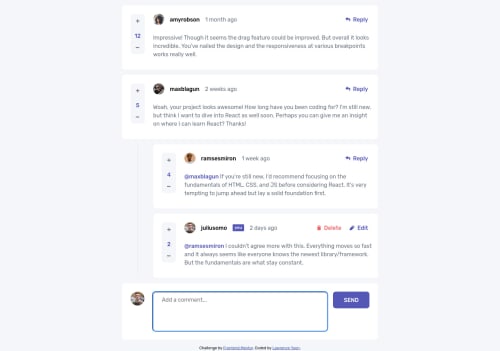Responsive and Interactive comments section clientside state

Solution retrospective
What did you find difficult while building the project?
-The most difficult parts of the project were the algorithms for the CRUD methods applied to the client side app data state. It was tough because the given data.json has an array within the app data object, and that array is an array of other objects, with the possibility of having a further nested array of objects.
Which areas of your code are you unsure of?
-The areas of code that I am unsure of have to do with the previously mentioned algorithms.
Do you have any questions about best practices?
-I do. What is the best practice for importing/exporting/abstracting the handler functions (handleUpdate, handleDelete, etc...)? I have it all at my app.jsx and feel like it is too cluttered.
Please log in to post a comment
Log in with GitHubCommunity feedback
No feedback yet. Be the first to give feedback on Larry's solution.
Join our Discord community
Join thousands of Frontend Mentor community members taking the challenges, sharing resources, helping each other, and chatting about all things front-end!
Join our Discord